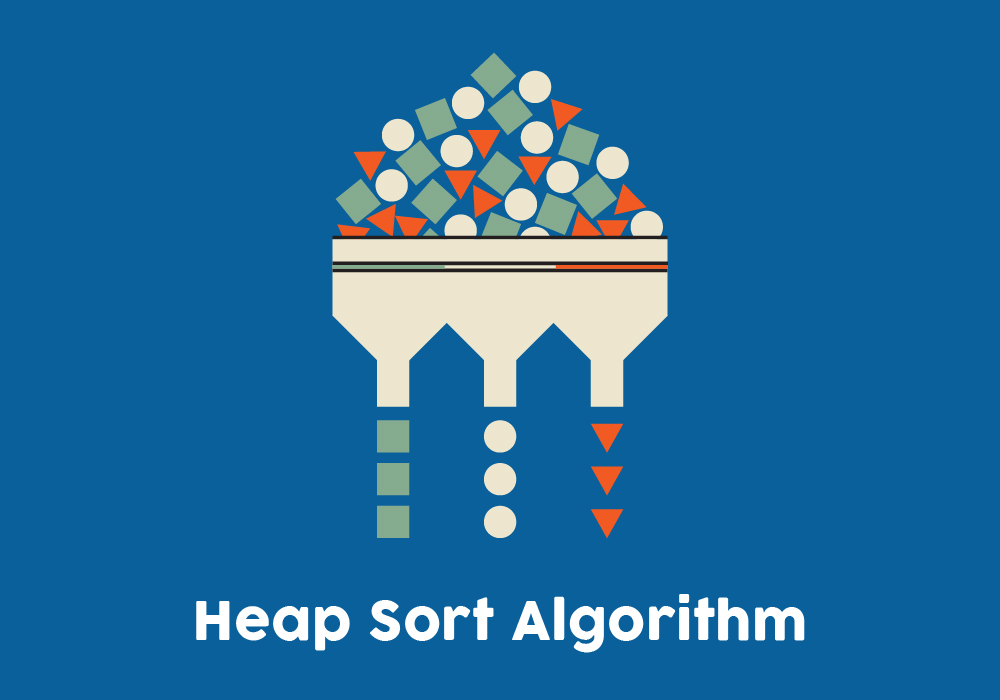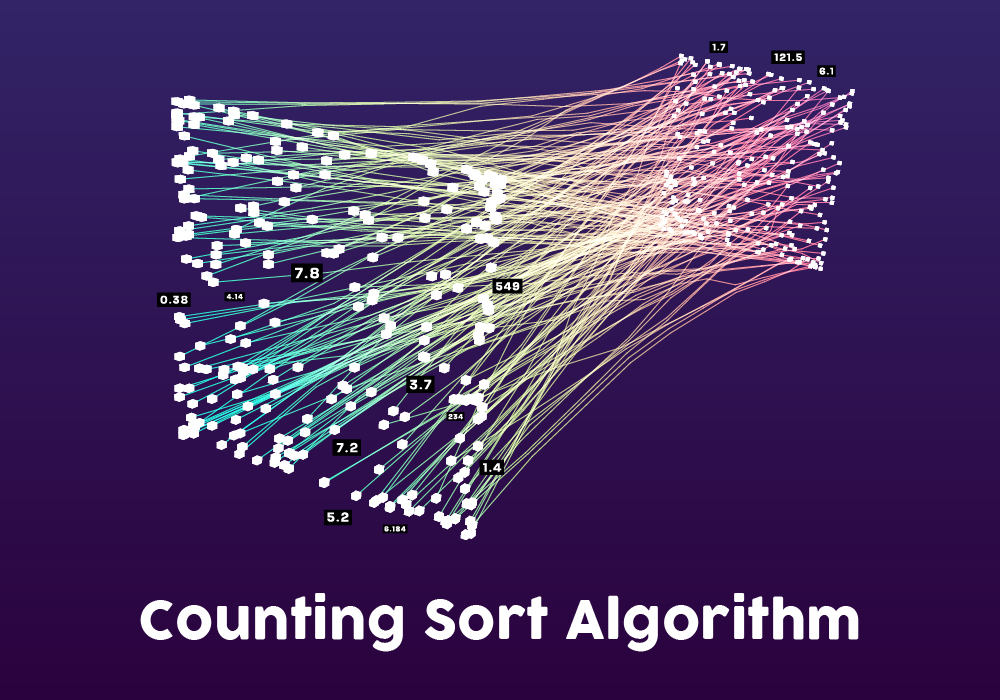Understanding the Bubble Sort Algorithm
Bubble Sort, as the name suggests, is a straightforward sorting algorithm that works by repeatedly stepping through the list, comparing adjacent elements, and swapping them if they are in the wrong order. The process is repeated for every element until the list is sorted. The algorithm gets its name because smaller elements “bubble” to the top of the list (beginning of the array) while larger elements “sink” to the bottom (end of the array), much like bubbles rising in a liquid.
How Does It Work?
Imagine you have a row of glasses filled with different amounts of water. Your task is to arrange these glasses in ascending order based on the amount of water in them. Starting from the leftmost glass, you compare the amount of water in two adjacent glasses. If the glass on the left has more water than the one on the right, you swap them. You continue this process, moving one glass to the right each time, until you reach the end of the row. By the end of this first pass, the glass with the most water (the largest element) will have moved to the far right.
For the next pass, you repeat the same process, but since the glass with the most water is already in its correct position, you don’t need to consider it anymore. This means that with each subsequent pass, you reduce the number of glasses you need to consider by one.
This process continues until all the glasses are sorted in ascending order. In the context of the Bubble Sort algorithm, the glasses represent elements in an array, and the amount of water represents the value of these elements.
Why Is It Important?
While Bubble Sort is not the most efficient sorting algorithm, especially for larger lists, it serves as a foundational concept for those new to computer science and algorithmic thinking. Its simplicity makes it a great starting point for understanding how sorting algorithms work. Moreover, its in-place sorting capability (i.e., it doesn’t require additional memory space) can be advantageous in memory-constrained environments.
Algorithm Steps of Bubble Sort
The Bubble Sort algorithm, at its core, is about comparing adjacent elements and making swaps as necessary. This process is repeated until the entire list is sorted. Here’s an even more detailed breakdown:
1. Initial Setup:
- Starting Point: Begin at the first index of the array.
- Comparison Counter: Set a counter for the number of comparisons to be made in the first pass. For an array of n elements, the first pass will have n-1 comparisons.
2. Comparison and Swap:
- Adjacent Element Comparison: Compare the element at the current index with the element at the next index.
- Decision Making: If sorting in ascending order and the current element is greater than the next element, or if sorting in descending order and the current element is less than the next element:
Swap the two elements.
- Moving Forward: Increment the current index and continue with the comparison and potential swap.
3. End of Pass & Reset:
- Completion of a Pass: Once the current pass is completed, the largest (or smallest, depending on the sorting order) element will have moved to its correct position at the end of the array.
- Reset for Next Pass: Reset the current index to the start of the array and reduce the comparison counter by one (since one more element is now in its correct position).
4. Optimization Check:
Early Termination: Introduce a flag to check if any swaps were made during a pass.
If no swaps were made in a pass, it means the array is already sorted, and there’s no need for further passes. This can significantly speed up the sorting of partially sorted arrays.
5. Completion:
The algorithm concludes either when:
The array is sorted (no swaps in a pass), or After it has completed n-1 passes.
Illustrative Example:
Consider an array: [29, 15, 37, 14]
First Pass:
- Compare 29 and 15. Since 29 > 15, swap them: [15, 29, 37, 14]
- Compare 29 and 37. No swap needed.
- Compare 37 and 14. Since 37 > 14, swap them: [15, 29, 14, 37]
Second Pass:
- Compare 15 and 29. No swap needed.
- Compare 29 and 14. Since 29 > 14, swap them: [15, 14, 29, 37]
Third Pass:
- Compare 15 and 14. Since 15 > 14, swap them: [14, 15, 29, 37]
Now, the array is sorted.
Implementing Bubble Sort in C
Bubble Sort, while not the most efficient, is one of the simplest sorting algorithms to understand and implement. Here’s a detailed guide on how to code it in the C programming language.
1. Setting Up the Development Environment:
- Ensure you have a C compiler installed, such as GCC.
- Use a text editor or an Integrated Development Environment (IDE) like Code::Blocks or Eclipse to write your code.
2. Writing the Bubble Sort Function:
- Function Prototype:
void bubbleSort(int arr[], int n);
Where arr[] is the array to be sorted, and n is the number of elements in the array.
- Function Logic:
Use nested loops: The outer loop to iterate through the entire array and the inner loop for the actual comparisons and swaps.
Introduce a flag to check if any swaps were made during a pass to optimize the algorithm.
Sample Implementation:
void bubbleSort(int arr[], int n) {
int i, j, temp;
int swapped; // flag to check if any swaps were made
for (i = 0; i < n-1; i++) {
swapped = 0; // reset the flag for each pass
for (j = 0; j < n-i-1; j++) {
if (arr[j] > arr[j+1]) {
// swapping using a temporary variable
temp = arr[j];
arr[j] = arr[j+1];
arr[j+1] = temp;
swapped = 1; // a swap was made
}
}
// if no swaps were made, the array is already sorted
if (swapped == 0) {
break;
}
}
}3. Writing the Main Function:
- Initialize an array with some sample values.
- Call the bubbleSort function to sort the array.
- Print the sorted array to verify the results.
Sample Main Function:
#include <stdio.h>
int main() {
int arr[] = {64, 34, 25, 12, 22, 11, 90};
int n = sizeof(arr)/sizeof(arr[0]);
int i;
bubbleSort(arr, n);
printf("Sorted array: \n");
for (i = 0; i < n; i++) {
printf("%d ", arr[i]);
}
printf("\n");
return 0;
}4. Compilation and Execution:
- Save your code with a .c extension, for example, bubbleSort.c.
- Open the terminal or command prompt.
- Navigate to the directory containing your code.
- Compile the code using the command: gcc bubbleSort.c -o output
- Run the compiled code with the command: ./output (or output.exe on Windows).
Analyzing the Time Complexity of Bubble Sort
Time complexity provides a high-level understanding of the relationship between the input size and the number of operations an algorithm performs. Let’s dissect the time complexity of Bubble Sort in greater detail.
1. Best-Case Scenario:
- Scenario Description: When the input array is already sorted.
- Understanding Comparisons: Even in the best-case scenario, an unoptimized Bubble Sort will traverse the entire list once. However, with the early termination optimization (where the algorithm stops if no swaps are made during a pass), only n-1 comparisons are made.
- Swap Operations: No swaps are needed since the array is already sorted.
- Time Complexity:
- Without Optimization: O(n^2) due to the nested loops.
- With Optimization: O(n) because the algorithm will break after the first pass.
2. Average-Case Scenario:
- Scenario Description: The expected time complexity over random input arrays.
- Understanding Comparisons: On average, Bubble Sort will make n(n-1)/2 comparisons due to the nested loops.
- Swap Operations: Statistically, about half of these comparisons might result in swaps, leading to roughly n(n-1)/4 swaps.
- Time Complexity: O(n^2) because the number of operations grows quadratically with the size of the input.
3. Worst-Case Scenario:
- Scenario Description: When the input array is sorted in the exact opposite direction of the desired order.
- Understanding Comparisons: The algorithm will make n(n-1)/2 comparisons, similar to the average case.
- Swap Operations: Every comparison will result in a swap, leading to n(n-1)/2 swaps.
- Time Complexity: O(n^2) due to the quadratic growth of operations with input size.
4. Space Complexity:
- In-Place Sorting: One of the notable features of Bubble Sort is its ability to sort the array using a constant amount of extra space. This means it doesn’t require additional memory proportional to the input size.
- Auxiliary Space: Apart from the input array, only a small amount of additional memory is used for variables like loop counters and temporary variables for swapping.
- Space Complexity: O(1), indicating constant space usage regardless of input size.
5. Insights and Implications:
- Comparative Efficiency: When juxtaposed with more advanced algorithms like Merge Sort (O(n log n)) or Quick Sort (average case O(n log n)), Bubble Sort’s inefficiency, especially for large datasets, becomes evident.
- Practicality: While Bubble Sort’s simplicity makes it an excellent educational tool, its quadratic time complexity renders it less practical for real-world applications with large datasets.
- Optimizations: Implementing early termination can improve performance on nearly sorted or smaller datasets, but it doesn’t change the worst-case or average-case time complexities.
Advantages and Disadvantages of Bubble Sort
Bubble Sort, like all algorithms, comes with its own set of strengths and weaknesses. Understanding these can help in determining when to use this sorting method and when to opt for alternatives.
1. Advantages of Bubble Sort:
Simplicity:
- Description: One of the primary advantages of Bubble Sort is its straightforward logic and ease of implementation.
- Implication: This simplicity makes it an excellent choice for educational purposes, helping beginners grasp the foundational concepts of sorting algorithms.
Space Efficiency:
- Description: Bubble Sort is an in-place sorting algorithm, meaning it requires a constant amount of extra memory (O(1) space complexity).
- Implication: This makes Bubble Sort suitable for systems with memory constraints since it doesn’t demand additional memory proportional to the data size.
Adaptive Nature:
- Description: If the list is partially sorted or has a small number of elements out of place, Bubble Sort can be optimized to sort faster.
- Implication: With the early termination check (where the algorithm stops if no swaps are made during a pass), Bubble Sort can have a best-case time complexity of O(n) when the list is already sorted.
2. Disadvantages of Bubble Sort:
Inefficiency on Large Lists:
- Description: Due to its O(n^2) average and worst-case time complexity, Bubble Sort can be considerably slow for large datasets.
- Implication: This quadratic growth in operations makes Bubble Sort less practical for real-world applications with substantial data.
Outperformed by Other Algorithms:
- Description: Many other sorting algorithms, like Merge Sort, Quick Sort, and even Insertion Sort, often outperform Bubble Sort in terms of speed, especially on larger datasets.
- Implication: In scenarios where performance is crucial, opting for these more efficient algorithms over Bubble Sort is advisable.
Number of Swaps:
- Description: In its worst-case scenario, Bubble Sort can end up making a large number of swaps, which can be computationally expensive.
- Implication: This can further slow down the sorting process, especially when swap operations are costly.
3. Practical Considerations:
While Bubble Sort has its merits, especially in educational contexts, it’s essential to weigh its advantages against its disadvantages in practical applications. For small datasets or situations where the data is nearly sorted, Bubble Sort might suffice. However, for larger datasets or applications where performance is paramount, more efficient algorithms should be considered.
Common Mistakes and Tips for Bubble Sort: An Insightful Guide
While Bubble Sort is relatively straightforward, there are common pitfalls that developers, especially beginners, might encounter. Recognizing these mistakes and understanding how to avoid them can lead to a more efficient and accurate implementation.
1. Common Mistakes:
Forgetting to Implement Early Termination:
- Description: One might forget to include the optimization where the algorithm stops if no swaps are made during a pass.
- Implication: Without this, even an already sorted list will take O(n^2) time, missing out on the best-case O(n) time complexity.
Incorrect Loop Bounds:
- Description: Setting incorrect loop boundaries can lead to missed comparisons or out-of-bounds errors.
- Implication: This can result in a partially sorted array or runtime errors.
Overlooking Swap Logic:
- Description: Mistakes in the swap logic, such as forgetting the temporary variable, can lead to data loss.
- Implication: This can result in incorrect sorting or even data corruption.
2. Tips for Efficient Implementation:
Implement Early Termination:
- Tip: Always include a flag to check if any swaps were made during a pass. If no swaps occur, the list is already sorted, and the algorithm can break out early.
- Benefit: This can significantly speed up the sorting process for nearly sorted or smaller datasets.
Use Functions for Modularity:
- Tip: Implement the Bubble Sort logic within its own function. This promotes code reusability and clarity.
- Benefit: Keeping code modular makes it easier to debug, test, and integrate into larger projects.
Test with Various Datasets:
- Tip: Don’t just test with one type of data. Use random datasets, already sorted datasets, and reverse-sorted datasets to ensure the algorithm works in all scenarios.
- Benefit: Comprehensive testing ensures the reliability and robustness of the algorithm.
Understand Before Implementing:
- Tip: Before coding, ensure you thoroughly understand the Bubble Sort logic. Visualize with small datasets or use diagrams to aid comprehension.
- Benefit: A clear understanding reduces the chances of errors and leads to a more efficient implementation.
3. When to Use Bubble Sort:
While Bubble Sort isn’t the most efficient sorting algorithm, it has its place. It’s suitable for:
- Educational and learning purposes.
- Small datasets.
- Situations where memory usage is a concern (due to its in-place nature).
- Scenarios where the data is nearly sorted and the early termination optimization can be leveraged.
Conclusion
Reflecting on Bubble Sort
As we wrap up our exploration of the Bubble Sort algorithm, it’s essential to reflect on its place in the vast landscape of sorting algorithms and its practical implications.
1. A Foundational Algorithm:
Bubble Sort, with its intuitive logic and straightforward implementation, serves as a foundational algorithm in the realm of computer science education. It offers budding programmers a gentle introduction to the world of algorithms, emphasizing the importance of comparison and swap operations in sorting.
2. Not Always the Best Tool for the Job:
While Bubble Sort has its merits, especially in terms of simplicity and in-place sorting, it’s not always the most efficient tool for the job. Its quadratic time complexity makes it less suitable for larger datasets, especially when compared to more advanced algorithms like Merge Sort or Quick Sort. However, with optimizations like early termination, Bubble Sort can be surprisingly efficient for nearly sorted or smaller datasets.
More Advanced Concepts:
Understanding Bubble Sort can pave the way for grasping more complex algorithms. The foundational concepts of comparisons, swaps, and loop iterations are common across many sorting algorithms. Once you’ve mastered Bubble Sort, transitioning to more advanced sorting techniques becomes a smoother journey.
Bubble Sort exemplifies the evolution of computer science. While there are more efficient algorithms available today, Bubble Sort remains a testament to the iterative nature of progress in the field. It serves as a reminder that there’s always room for improvement and optimization, no matter how simple or complex a problem might seem.






